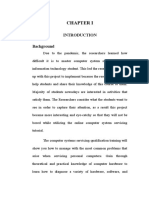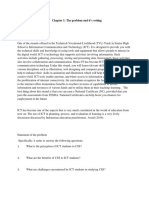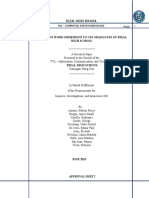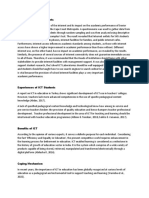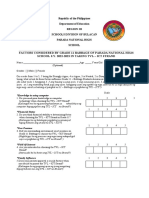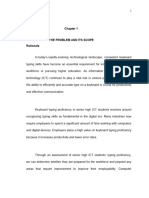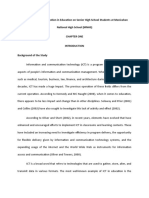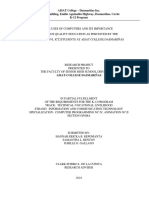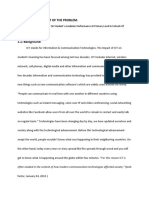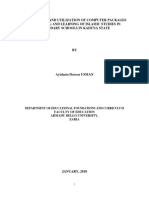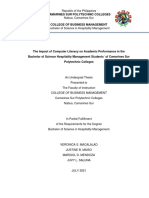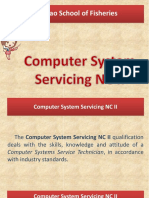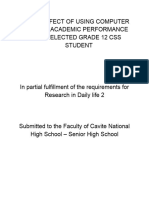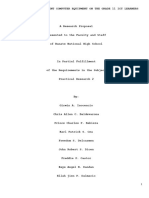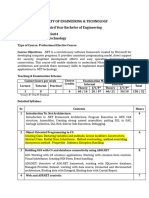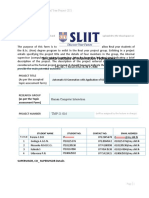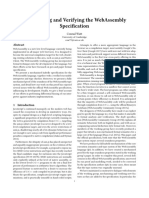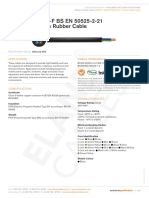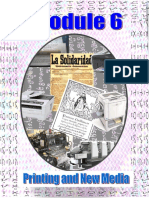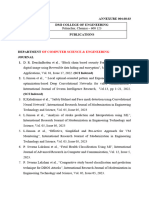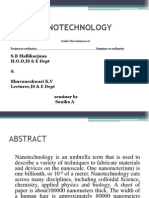0% found this document useful (0 votes)
256 views15 pagesRESEARCH Group 9
This document presents a research study that aims to assess the ability of Grade 12 ICT students in Computer System Servicing (CSS) NC II at Kasiglahan Village Senior High School. The study seeks to evaluate students' proficiency in key CSS competencies like hardware disassembly/assembly, software installation, network configuration, and server setup. It also examines factors that influence students' CSS ability. The research intends to help students, parents, teachers and future researchers by identifying strengths and areas for improvement in CSS education.
Uploaded by
ellaineangelapinedaCopyright
© © All Rights Reserved
We take content rights seriously. If you suspect this is your content, claim it here.
Available Formats
Download as DOCX, PDF, TXT or read online on Scribd
0% found this document useful (0 votes)
256 views15 pagesRESEARCH Group 9
This document presents a research study that aims to assess the ability of Grade 12 ICT students in Computer System Servicing (CSS) NC II at Kasiglahan Village Senior High School. The study seeks to evaluate students' proficiency in key CSS competencies like hardware disassembly/assembly, software installation, network configuration, and server setup. It also examines factors that influence students' CSS ability. The research intends to help students, parents, teachers and future researchers by identifying strengths and areas for improvement in CSS education.
Uploaded by
ellaineangelapinedaCopyright
© © All Rights Reserved
We take content rights seriously. If you suspect this is your content, claim it here.
Available Formats
Download as DOCX, PDF, TXT or read online on Scribd
/ 15

